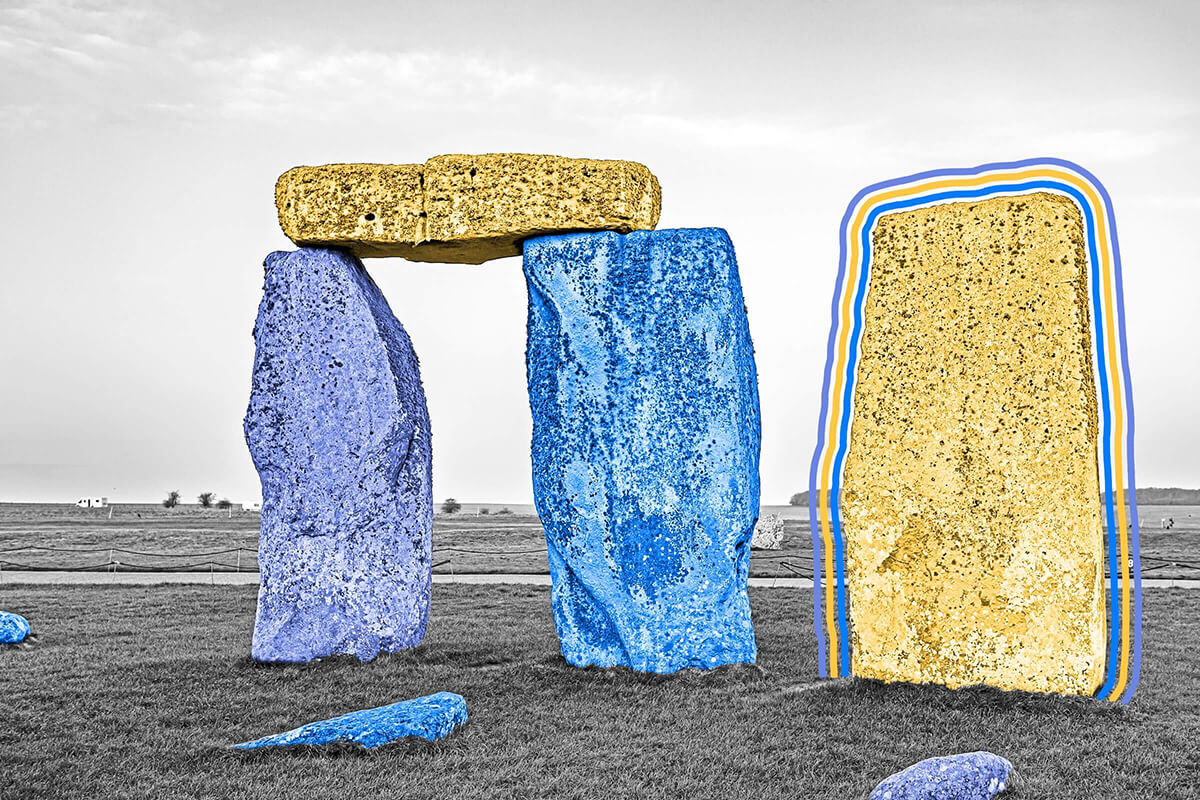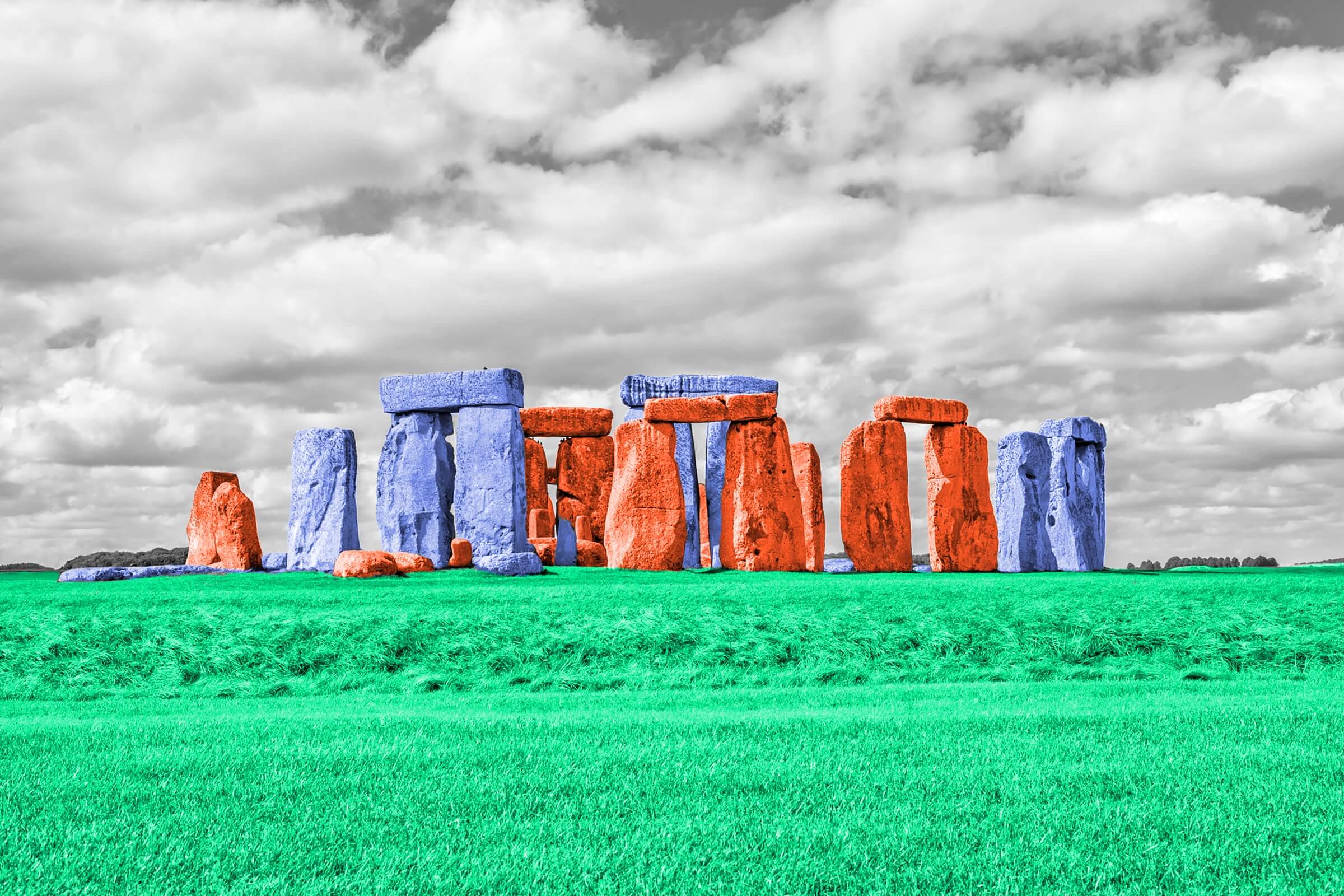
Some of the stones at Stonehenge came from 150 miles away.
Questions abound when it comes to Stonehenge, but not everything about the monument is shrouded in mystery. We know, for instance, that around 100 stones make up the site — and that some of them came from nearly 150 miles away. Given that Stonehenge is 5,000 years old, that’s quite the feat. This raises two crucial questions: Who transported said stones, and how? That’s where the mystery begins. For one thing, no one’s sure who built England’s world-famous monument, with everyone from Merlin to aliens receiving credit from various factions; more plausible culprits include Danes, Celts, and Druids.
The stones at Stonehenge are grouped into two types: larger blocks known as “sarsen stones,” and smaller stones in the central area known as “bluestones.” Over the last decade or so, researchers have confirmed that the bluestones came from the Preseli Hills of western Wales, about 150 miles from Stonehenge. (The sarsen stones, meanwhile, were likely found 20 or 30 miles away from the monument.) As for how the bluestones made that long journey, we only have theories: Some scholars believe they were dragged on wooden rafts, although others have suggested that a glacier carried the stones at least part of the way. Most archaeologists scoff at the glacier theory, however, and research in 2019 at outcroppings in the Preseli Hills both conclusively linked them to Stonehenge and confirmed evidence of quarrying work around 3000 BCE — the same era when Neolithic builders were first constructing the mysterious stone circles. That means human hands took the rock from the locations in Wales, but as for exactly how, we simply don’t know — and possibly never will.
We’ve all made impulse buys from time to time, but most of them are fairly minor. The same can’t be said of Cecil Chubb, a 39-year-old lawyer who reportedly arrived at a 1915 auction to buy a set of dining chairs at the behest of his wife and ended up buying Stonehenge instead. Just as surprising as the fact that the monument was being sold at an estate sale in the first place — it was privately owned for centuries — is that no one was especially keen on buying it. “Gentlemen, it is impossible to value Stonehenge,” said the auctioneer when the bids had increased only £1,000 over the starting price of £5,000. “Surely £6,000 is poor bidding, but if no one bids me any more, I shall set it at this price. Will no one give me any more than £6,000 for Stonehenge?” he added. Chubb would, but not much more — he won with a bid of £6,600, just a little more than $1 million in today’s money. He donated it to the British people three years later, writing that “the nation would like to have it for its own, and would prize it most highly.”

